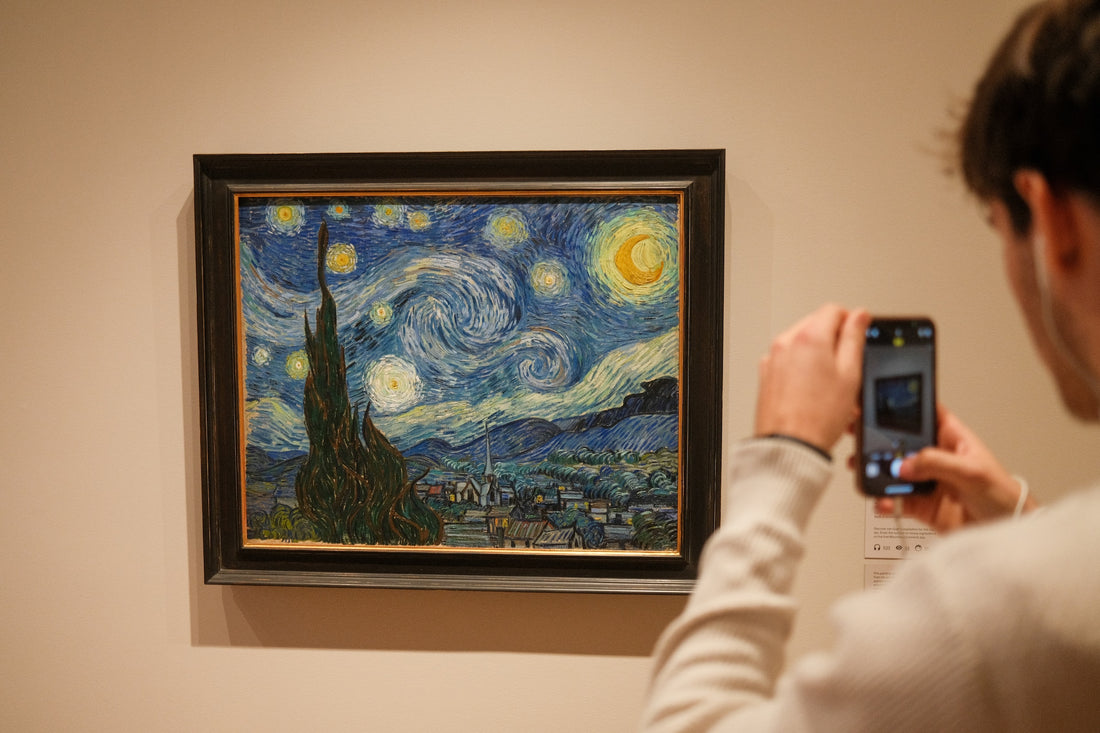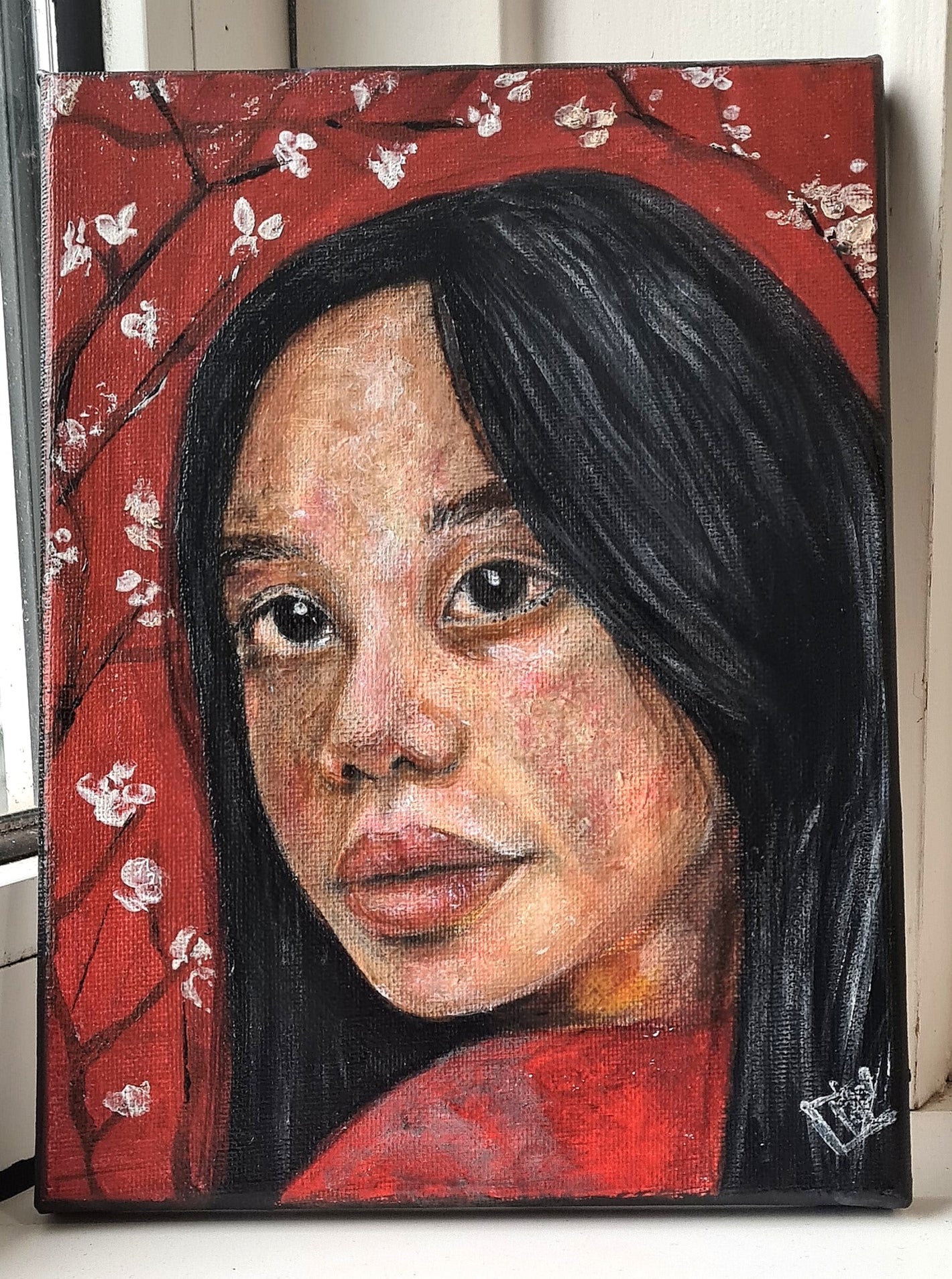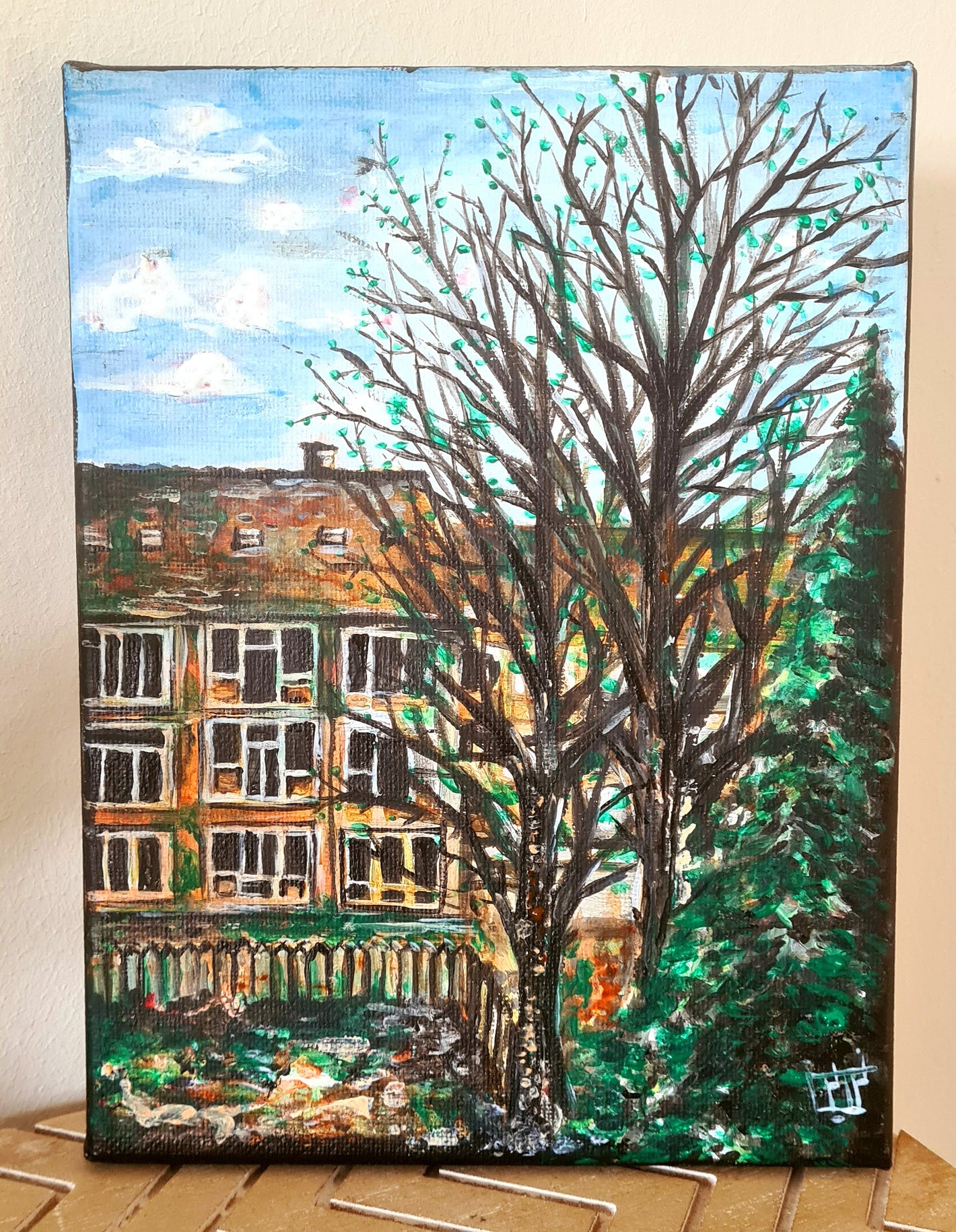Vincent van Gogh: A Portrait of Passion and Color
Vincent van Gogh's life story is a tapestry woven with passion, struggles, and extraordinary talent. Born on March 30, 1853, in the picturesque village of Groot-Zundert in the Netherlands, van Gogh's early years were marked by a fascination with art and a deep connection to the natural world. Gogh was one of the most significant figures among the post-Impressionists movement. His distinctive use of vivid colors, bold brushstrokes, and well-defined shapes had a profound impact on shaping the direction of Expressionism in the realm of modern art.

Image By Alina Grubnyak (@alinnnaaaa)
Apprenticeship and Exploration
At the tender age of 16, van Gogh embarked on an apprenticeship with art dealers in The Hague, a step that would lay the foundation for his future artistic pursuits. His experiences in their London and Paris branches from 1873 to 1876 exposed him to the world of art commerce and paved the way for his eventual immersion in the world of painting.

Flower Beds in Holland / Bulb Fields (1883)
Exploring Identity and Spirituality
Van Gogh's path was anything but straightforward. Amidst brief stints in missionary work and theology, he ventured into studying drawing at the Brussels Academy. However, it was his collaboration with Dutch landscape painter Anton Mauve in The Hague that allowed him to forge a deeper connection with art. It was during this period that he began to create works centered around the lives of peasants, encompassing still life, landscapes, and figures.
![]()
Stairway at Auvers (1890)
Parisian Influences and Post-Impressionism
Van Gogh's artistic evolution gained momentum with his relocation to Paris in 1886, where he reunited with his brother Theo, an art dealer. Here, he encountered the luminaries of Impressionism and Post-Impressionism, such as Henri de Toulouse-Lautrec and Paul Gauguin. His exploration of pure colors and innovative broken brushwork techniques marked the crystallization of his Post-Impressionist style, showcasing his departure from conventional artistic norms.
![]()
Terrace in the Luxembourg Gardens (1886)
The Arles Period: Blossoming Creativity
Venturing to Arles in southeastern France in 1888, van Gogh embarked on a period of astonishing creativity. His artwork from this phase, characterized by vibrant depictions of blossoming fruit trees, sunflowers, self-portraits, and landscapes, marked the zenith of his initial artistic journey. His collaboration with Gauguin during this time influenced both artists, albeit with strained relations.
![]()
View of Arles, Flowering Orchards (1889)
Turmoil and Triumph: Battling Demons
Van Gogh's inner struggles came to the fore on Christmas Eve 1888 when he tragically severed a part of his own ear during an emotional confrontation with Gauguin. Despite this turmoil, his resilience shone as he entered an asylum in April 1889, continuing to produce an astonishing 150 paintings and drawings during his 12-month stay.

Corridor in the Asylum (1889)
Auvers-sur-Oise: The Final Chapter
A move to Auvers-sur-Oise in 1890 ignited another burst of creativity for van Gogh. However, his fragile mental state led to a tragic relapse, culminating in his self-inflicted gunshot wound in July of that year. This event marked the end of his turbulent journey, leaving behind a legacy that transcended his tumultuous life.
![]()
Self-Portrait with Bandaged Ear and Pipe (1889)
Legacy and Influence
Van Gogh's artistic career spanned merely a decade, during which he created over 800 paintings and 700 drawings. Astonishingly, he managed to sell just one artwork during his lifetime. However, his impact on the world of art was immense. Regarded as the greatest Dutch painter since Rembrandt, van Gogh's innovative techniques, vivid colors, and emotional depth played a pivotal role in shaping the trajectory of modern painting.

Image By Ståle Grut (@stalebg)
Artistic Style and Techniques
At the heart of van Gogh's art is his distinctive style characterized by bold colors and expressive brushwork. His technique, known as impasto, he applied thick layers of paint onto the canvas and simply mixed them together with his own fingers which added depth and vitality to his canvases. One of the examples of the impasto technique in his oeuvre is the painting The Starry Night.
![]()
The Starry Night (1889)
Famous Artworks
Among van Gogh's most celebrated works are the series of "Sunflowers." These paintings not only showcase his mastery of color but also reflect his desire to capture the fleeting beauty of nature. "The Bedroom" provides an intimate glimpse into his personal space, while "Café Terrace at Night" transports viewers to the vibrant streets of Arles.
![]()
Café Terrace at Night (1888)
Mental Health and Creativity
Van Gogh's struggles with mental health are an integral part of his narrative. His emotional sensitivity often manifested in his art, resulting in pieces that exude both beauty and turmoil. His letters to his beloved brother Theo offer a poignant insight into his thoughts and emotions, revealing the deep connection between his mental state and his creative output.
![]()
Bank of the Oise at Auvers (1890)
Visiting Van Gogh Sites
A pilgrimage to places associated with van Gogh is a journey through his creative landscapes. The Van Gogh Museum in Amsterdam houses a treasure trove of his works, allowing visitors to trace his artistic evolution. In Arles, the sites he painted continue to evoke the same spirit of inspiration that once moved him.

Image By Frans Ruiter (@frns)
Vincent van Gogh's life and art are a testament to the profound connection between creativity and the human experience. Through his art, he immortalized his emotions, struggles, and the beauty he found in the world around him. As we immerse ourselves in his masterpieces, we uncover the layers of his soul and the timeless allure of his canvases.
Sources
Stranger on the earth; a psychological biography of Vincent van Gogh By Lubin, Albert J
Vincent van Gogh: The Complete Paintings (2020) By Ingo Walther and Rainer Metzger





